16 Top things to do in El Salvador
Discover all the top things to do in El Salvador, moving from east to west, from the Gulf of Fonseca to Costa del Sol.
Come to El Salvador for the natural wonders and stay for the people, food, and amazing underground music scene. Whether you’re here to hike to a volcanic crater, grab a warm plate of pupusas, or dance to live music, El Salvador will give you much more than what you came for.
In this guide, we’ll take you on a journey from East to West, uncovering the top things to do in El Salvador. We’ll cover all the beaches you shouldn’t miss, charming towns, and memorable landscapes. Also, you can expect us to wrap it up with some insider tips on making this trip more enjoyable and staying connected at all times.
1. Gulf of Fonseca
When you’re taking a boat trip to the Gulf of Fonseca, you are not only visiting El Salvador. The Gulf is a part of a Pacific coast, shared between Honduras, Nicaragua, and El Salvador. If you decide to get an eSIM to stay connected on your trip, ensure you have a data plan covering the entire South America, because you can be slipping in and out of different national networks.
There are some rumors that this used to be the hideout for the pirates who waited for Spanish ships carrying valuables between Europe and the Americas. It is said that the pirates stashed their hidden treasure somewhere in the Gulf. However, even if you are not after the treasure, this Gulf is worth visiting for the stunning views.
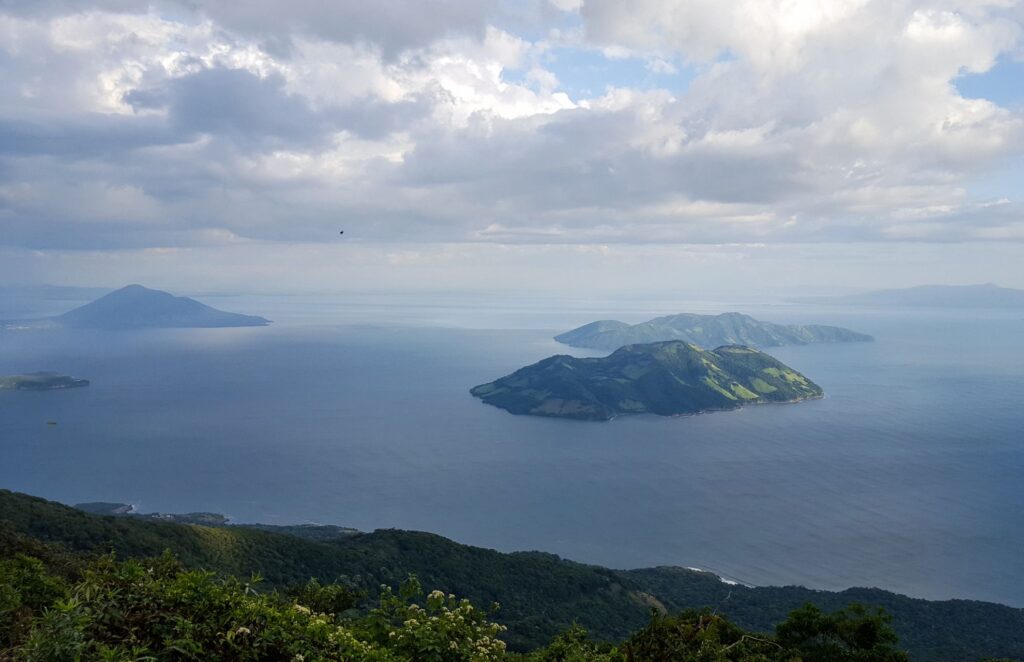
What to do in the Gulf of Fonseca:
- Take a boat trip: Enjoy the views of the Gulf from the sea. Make sure to stop at Meanguera and El Tigre Islands. The first is a relaxing beach paradise, while the latter has interesting hiking trails on top of the beaches.
- Spot wildlife: Watch out for dolphins leaping in the Gulf’s waters or keep an eye out for hawksbill turtles, especially during the nesting season. Birdwatchers will love the chance to see pelicans, frigatebirds, and other seabirds.
- Listen to the tales of pirates: Talk to local guides, who share stories of how pirates once hid treasures on the Gulf’s remote islands and in mangrove forests.
2. Perquín (Museum of the Revolution)
The next spot heading west from the Gulf of Fonseca is Perquín, home to the Museum of the Revolution and a significant location for understanding El Salvador’s modern history.
Perquín was once a stronghold for guerrilla fighters during the Salvadoran Civil War. The museum displays homemade weapons and guerrilla propaganda, reflecting the resilience of those who lived through the war.
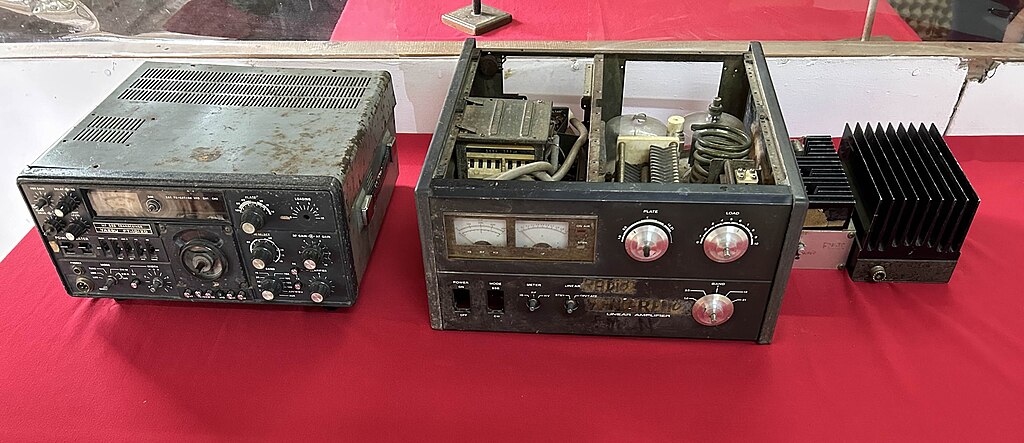
What to do in Perquín:
- Visit the Museum of the Revolution: Explore exhibits featuring guerrilla weapons, propaganda posters, and personal stories from the war. A highlight is the reconstructed guerrilla radio station, Radio Venceremos, which broadcasted updates during the conflict.
- Take a local-guided hike: Join a guide for a hike through the mountain trails once used by guerrilla fighters, where you’ll find hidden caves and strategic lookouts.
- Learn from the locals: Talk to residents who lived through the Civil War; many share personal stories that bring history to life.
- Relax in nature: The surrounding mountains are ideal for bird watching and soaking in a peaceful environment.
3. San Miguel (Volcán Chaparrastique)
Volcán Chaparrastique, near San Miguel, is one of Central America’s most active volcanoes. It has been erupting for over 2,000 years, and local folklore says this is because of a fire spirit known as the “Guardián del Fuego” (Guardian of Fire).
This mythical being is believed to protect the land and its people by controlling the volcano’s eruptions. According to the legend, the fire spirit only allows the volcano to erupt when it is necessary to maintain the balance in nature.
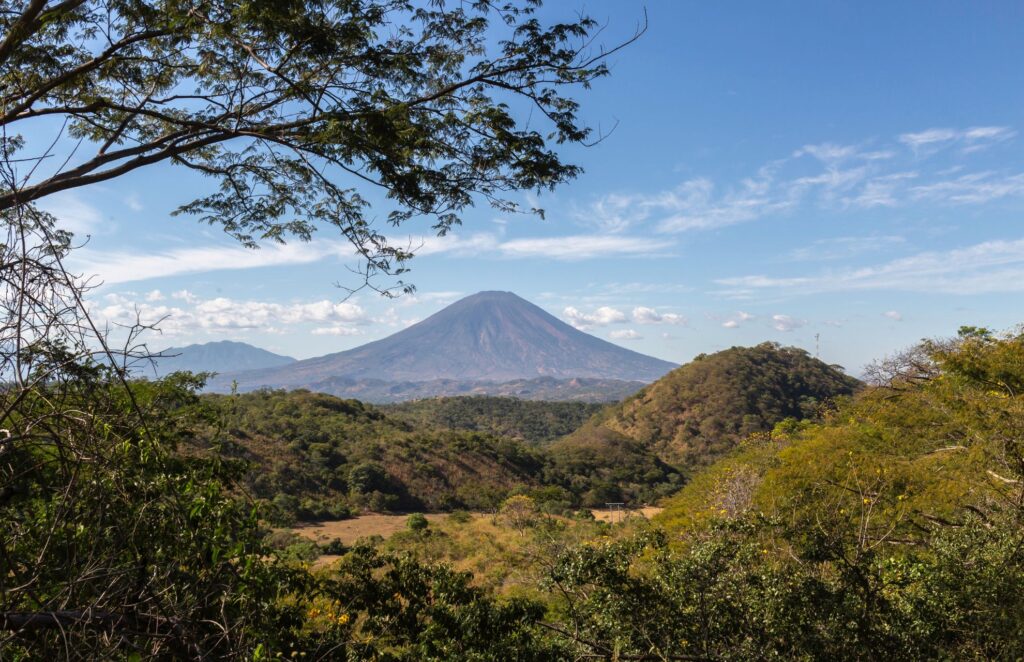
What to do in San Miguel:
- Hike Volcán Chaparrastique: Take a guided trek up the slopes of this active volcano. The hike to the summit takes around 3-5 hours, depending on your pace and starting point.
- Explore San Miguel city: After the hike, return to San Miguel for a quick lunch featuring the city’s famous yuca fritters and pupusas.
- San Miguel Carnival: If you’re visiting in November, the city hosts its famous Carnaval de San Miguel, one of the largest festivals in El Salvador. With music, dancing, and parades, it’s a must-see cultural experience.
4. Alegría (Laguna de Alegría)
There is another spirit that dwells in El Salvador. More precisely, this myth takes you to the highlands of Usulután, the small town of Alegría, often called the “Garden of El Salvador.”
It is said that in Laguna de Alegría, a siren lures and drowns men in the waters of this crater lake. So, if you are following the trail of the local lore, this is definitely one of the best places to visit in El Salvador.
The stunning views of this beautiful are truly magical due to its interesting color, which originates from its high sulfur content. It’s no wonder it is surrounded by myths.
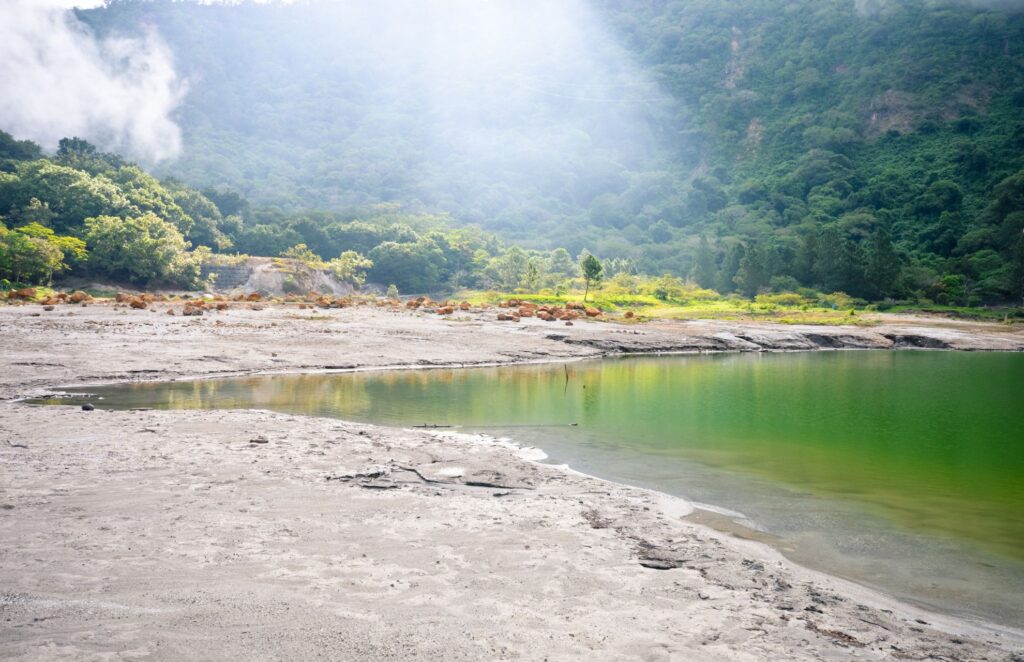
What to do in Alegría:
- Hike to the Laguna de Alegría: It’s a short hike but a very rewarding one. Soak in the eerie, but wonderful atmosphere of this place.
- Discover the gardens and flowers: Wander through Alegría’s gardens, known for stunning orchids, bromeliads, and other tropical plants. Many nurseries sell potted plants, so you can bring home a living souvenir of your visit.
- Visit the José María Peralta Lagos Museum: Dive into the town’s cultural history at this museum, dedicated to one of El Salvador’s most famous poets. Explore exhibits that showcase the literary and historical heritage of Alegría.
5. Playa Las Flores
To continue on a spiritual note, it’s interesting to learn that Playa Las Flores was once considered sacred by the Pipil people, who believed the ocean was a gateway to the spirit world. This beach is near the little town of El Cuco, and it is world-famous as a surfing spot. Many surfers worldwide come to this little piece of the Pacific coast to enjoy the waves.
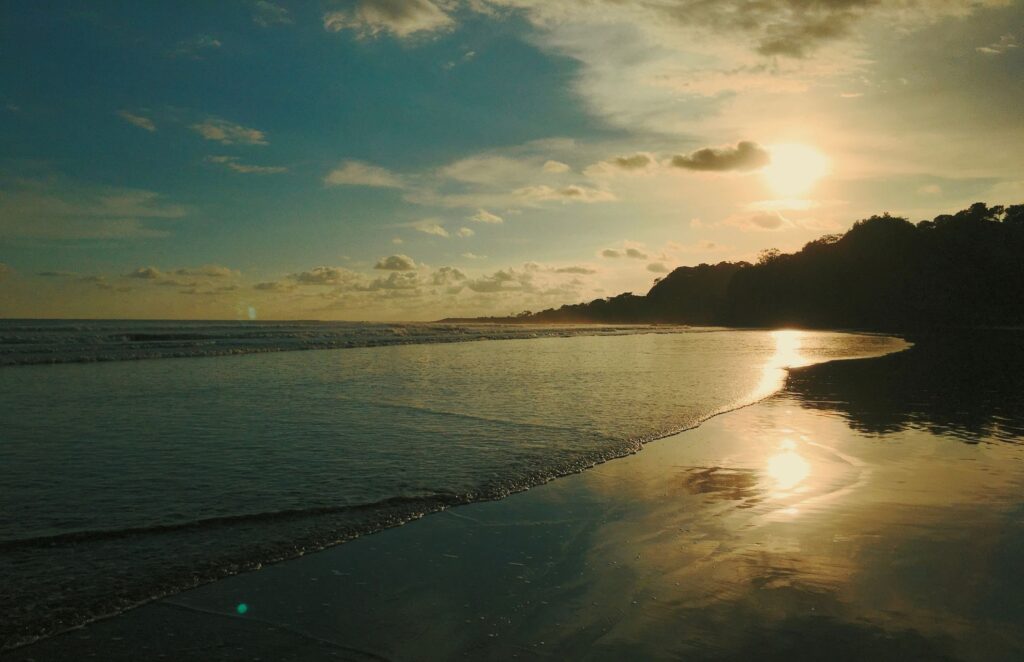
What to do in Playa Las Flores
- Stay at a surf camp: Join one of the many surf camps in the area, especially if you’re wondering what to do in El Salvador. There, you can improve your skills, meet fellow travelers, and immerse yourself in the surf culture.
- Try paddleboarding: If surfing is not your thing, all is not lost. If the waves are calm, rent a paddleboard and glide across the water, taking in the beauty of the coastline from a different perspective.
- Practice yoga by the ocean: Many beachfront accommodations offer yoga sessions with the soothing sound of waves in the background.
6. Jiquilisco Bay
Jiquilisco Bay is the best places to visit in El Salvador for travelers who enjoy eco-tourism. It is the home to the largest mangrove forest in El Salvador and is a designated UNESCO Biosphere Reserve. It serves as a critical nesting ground for the endangered hawksbill sea turtle, one of the rarest sea turtles in the world.
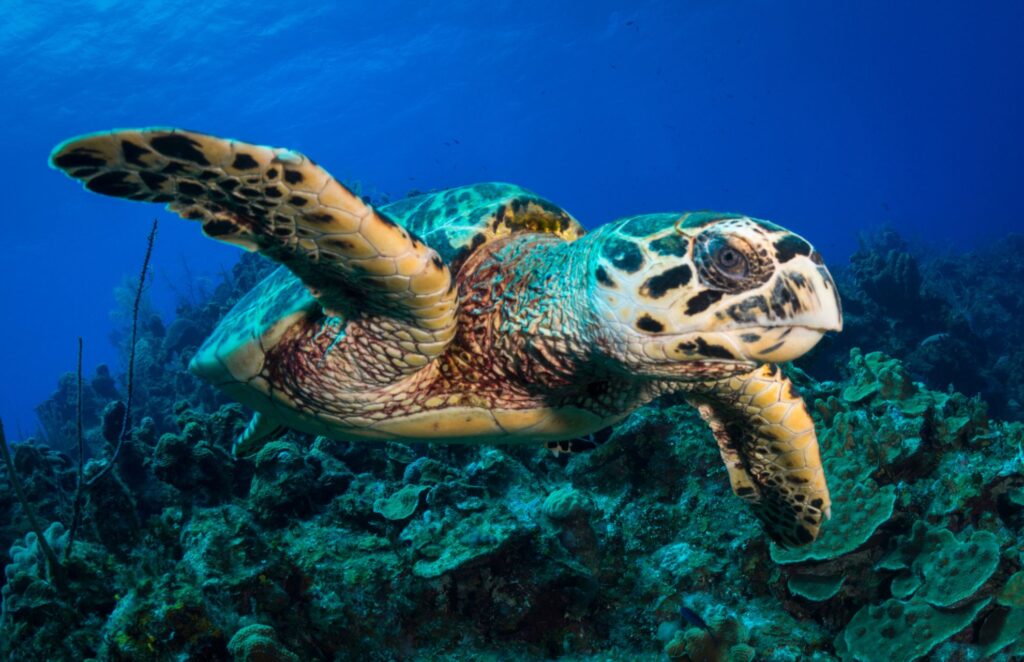
What to do at Jiquilisco Bay
- Join a turtle release program: Participate in a conservation initiative and witness the magical moment when baby hawksbill turtles are released into the ocean during nesting season. This is one of the best things to do in El Salvador and give back to the community.
- Explore the mangroves by kayak: Paddle through the largest mangrove forest in El Salvador, navigating narrow waterways surrounded by lush greenery and abundant wildlife. It’s a peaceful and immersive way to connect with nature.
- Go birdwatching: Jiquilisco Bay is where enthusiastic bird watchers come to spot herons, kingfishers, and other migratory birds that thrive in the mangrove ecosystem. If you don’t have a guide, make sure you have an internet connection in El Salvador so you can identify the birds with an app.
7. San Vicente (Cerro Cinotepeque)
Located in the heart of El Salvador, Cerro Cinotepeque is a dormant volcanic mountain famous for its geothermal hot spring waterfalls, lush trails, and panoramic views of the Pacific coast. This is a common destination for a relaxing day trip in Central America’s small country, as it brings together colorful nearby villages and the fascinating surrounding countryside.
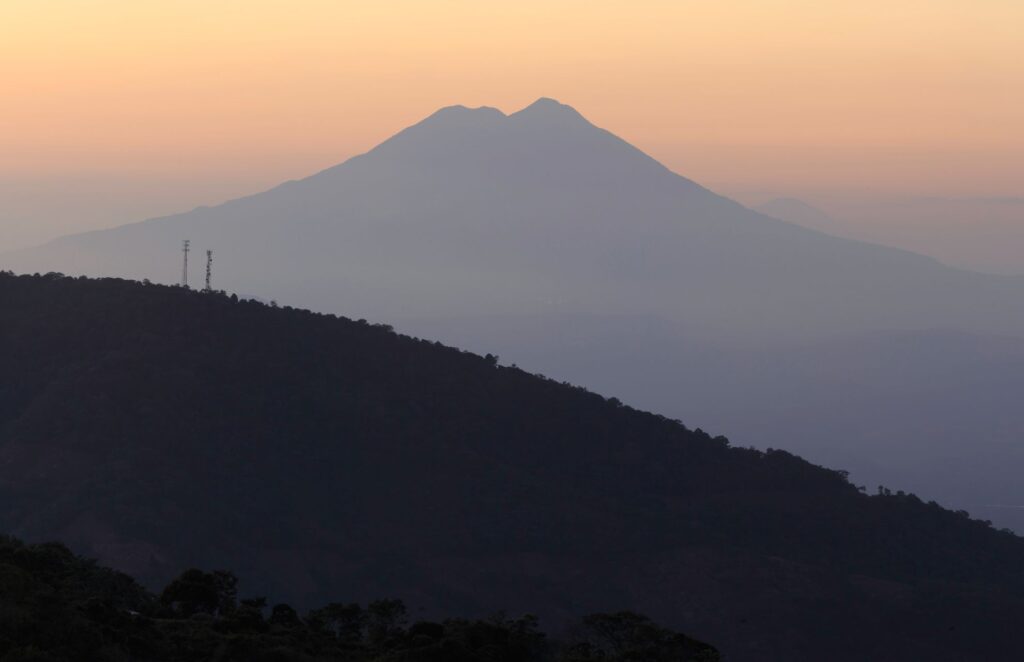
What to do at Cerro Cinotepeque
- Discover the myth: Cerro Cinotepeque is believed to be guarded by a coyote spirit that protects the natural springs and waterfalls, ensuring they never dry up.
- Soak in the hot springs: Relax in the natural hot springs, available year-round, perfect for unwinding during your trip.
- Hike to the hot spring waterfall: A long hike through the beautiful countryside leads to a breathtaking hot spring waterfall, where you can cool off and admire the scenery.
- Visit Mirador Cinotepeque: From this elevated viewpoint, enjoy an amazing view of the Pacific Ocean, Lake Ilopango, and nearby volcanic peaks.
8. Santa Ana Volcano (Ilamatepec)
The towering Santa Ana Volcano, also known as Ilamatepec, is the tallest and most iconic volcano in El Salvador. It offers one of the top things to do in El Salvador for adventurers.
Located within Cerro Verde National Park, this main tourist destination is famed for the stunning views and the unreal crater lake at its summit. Because it is highly acidic, this lake can change color based on volcanic activity.
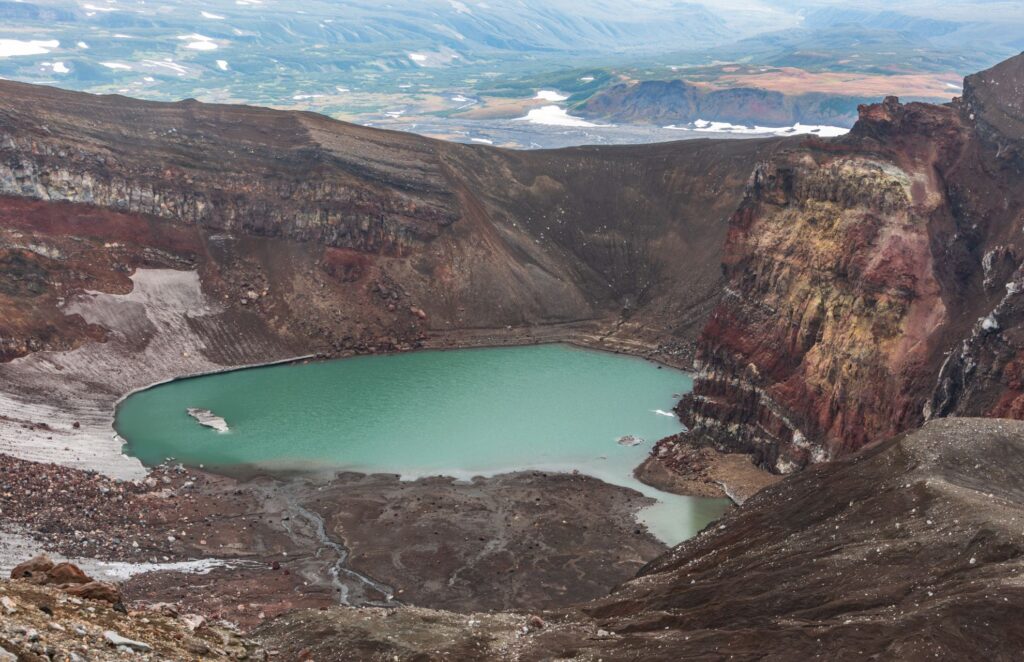
What to do at Santa Ana Volcano
- Hike to the summit: The long hike to the top of Santa Ana volcano takes about 4-5 hours round trip, with paths winding through the national park.
- Explore Cerro Verde National Park: The park surrounding the Santa Ana volcano offers shorter hiking trails, perfect for those who want to enjoy the beautiful countryside without climbing to the summit. It’s also an excellent spot for bird-watching.
- Learn the history: Local guides can tell you stories about the volcano’s connection to Mayan ruins, the region’s history, and the sacred importance of the land.
9. Lake Coatepeque
Lake Coatepeque, is a beautiful lake renowned for its serene waters and stunning surroundings. Formed over 50,000 years ago in the caldera of a massive volcanic eruption, the lake is one of the largest and most picturesque bodies of water in the country.
According to local legend, Lake Coatepeque was once the site of a majestic Mayan city that now lies submerged beneath its depths. Some locals believe that you can still hear the distant echoes of ancient rituals and drums emanating from the water on quiet evenings. Another legend says that Lake Coatepeque was formed when a giant serpent erupted from the ground, creating a crater that later filled with water.
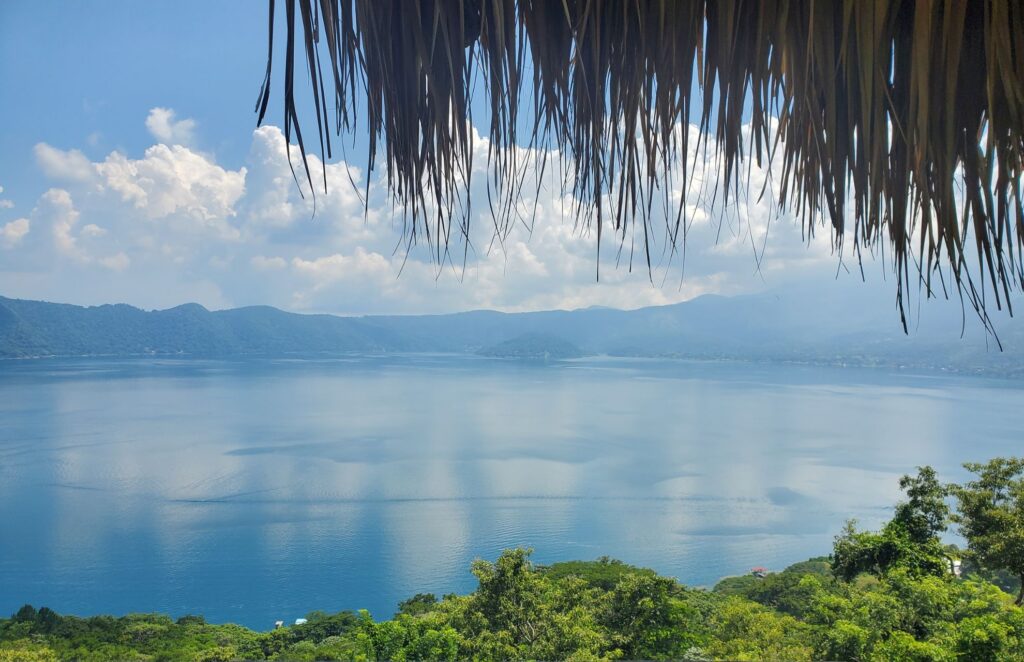
What to do at Lake Coatepeque
- Admire the stunning views: Take in the stunning views of the lake from various viewpoints along the caldera rim. If you are lucky, you might witness the lake’s color change.
- Visit Teopan Island: Explore Teopan Island, once a sacred Mayan site. Boat tours are available to take you across the lake, offering a unique perspective of the surrounding landscapes.
- Dine at lakeside restaurants: Savor local Salvadoran cuisine at one of the many restaurants dotting the shoreline. Enjoy dishes like pupusas while gazing over the beautiful lake.
10. Parque Nacional El Boquerón
Parque Nacional El Boquerón, located just outside the bustling city of San Salvador, is home to the impressive San Salvador Volcano and its massive volcanic crater. The crater, known as El Boquerón, spans over 5 kilometers in diameter and plunges 558 meters deep,
It was formed during a powerful eruption over a thousand years ago, and the smaller crater inside, nicknamed “El Boqueroncito,” serves as a reminder of the volcano’s continued activity.
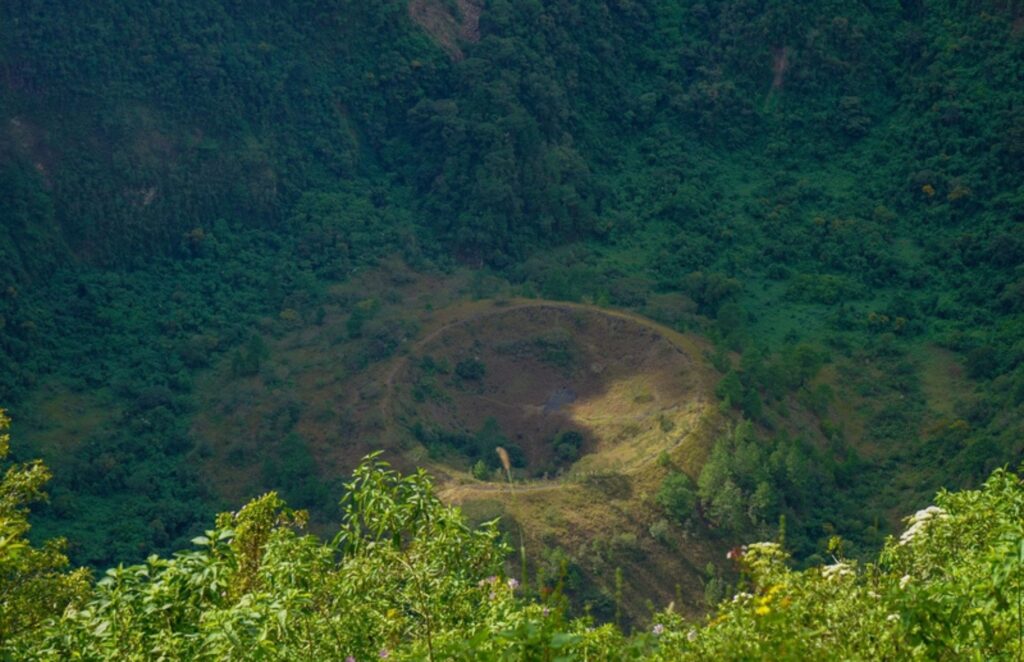
What to do at Parque Nacional El Boquerón
- Hike the trails: Explore the park’s scenic hiking trails that wind through vibrant forests and volcanic terrain, culminating in spectacular views of the volcanic crater.
- Admire the stunning views: Stand at the edge of the San Salvador Volcano and take in the sweeping vistas of the crater, the city of San Salvador, and the surrounding countryside.
- Learn about the volcano: Discover the history and geology of this natural wonder, including its most recent eruption in 1917, which shaped the landscapes you see today.
11. Puerta del Diablo
Puerta del Diablo (The Devil’s Door) is a dramatic rock formation surrounded by breathtaking landscapes. According to folklore, this was created when the devil fled from Saint Michael, who was chasing him to banish him from the region. The devil’s escape split the massive rock formation in two, creating the dramatic cliffs that remain today. The site is also said to be haunted, with locals reporting eerie sounds and lights at night.
With its rugged terrain and striking cliffs, Puerta del Diablo offers a mix of hiking trails and rock climbing opportunities, making it a hotspot for adventurers.
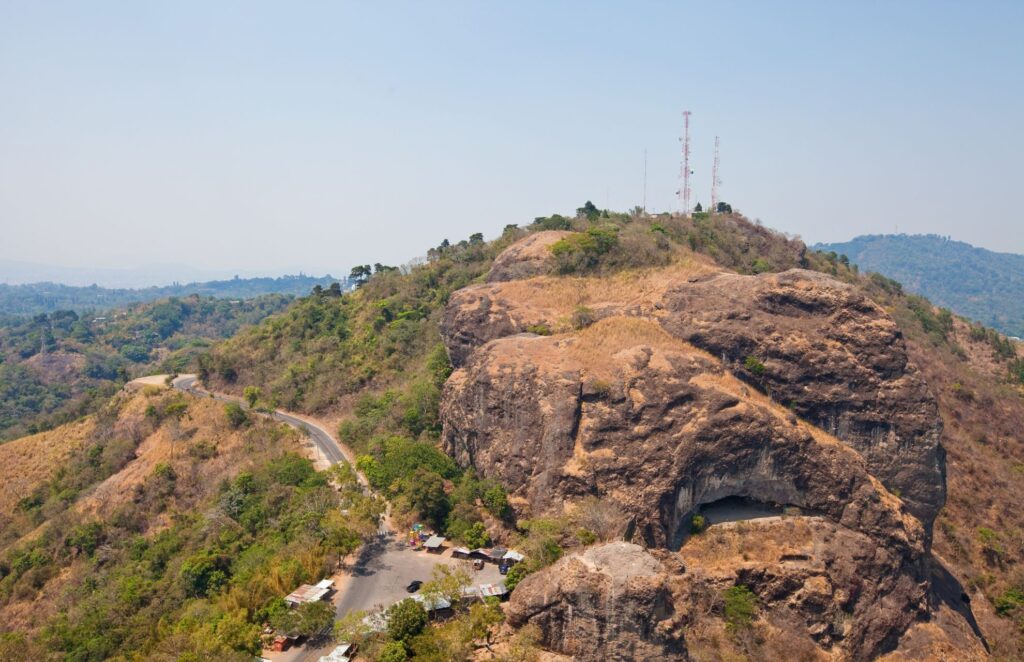
What to do at Puerta del Diablo
- Explore hidden caves: Beneath the towering cliffs, there are caves that are said to have been used by locals as hiding spots during times of conflict. Guided tours can take you through these mysterious and historical spaces.
- Attend a cultural event: Occasionally, Puerta del Diablo hosts festivals or performances featuring traditional music and dance, offering a unique way to experience Salvadoran culture.
- Sunrise or sunset hike: Visit in the early morning or evening for spectacular sunrise or sunset views, casting a golden glow over the cliffs and the surrounding landscapes.
12. Catedral Metropolitana de San Salvador
The Catedral Metropolitana de San Salvador is in the heart of San Salvador, the biggest city in Central America. It is the final resting place of Archbishop Óscar Romero, a beloved figure who spoke out against injustice during El Salvador’s civil war.
He was assassinated in 1980 while delivering mass, and his tomb in the cathedral’s crypt has become a pilgrimage site for visitors from around the world.
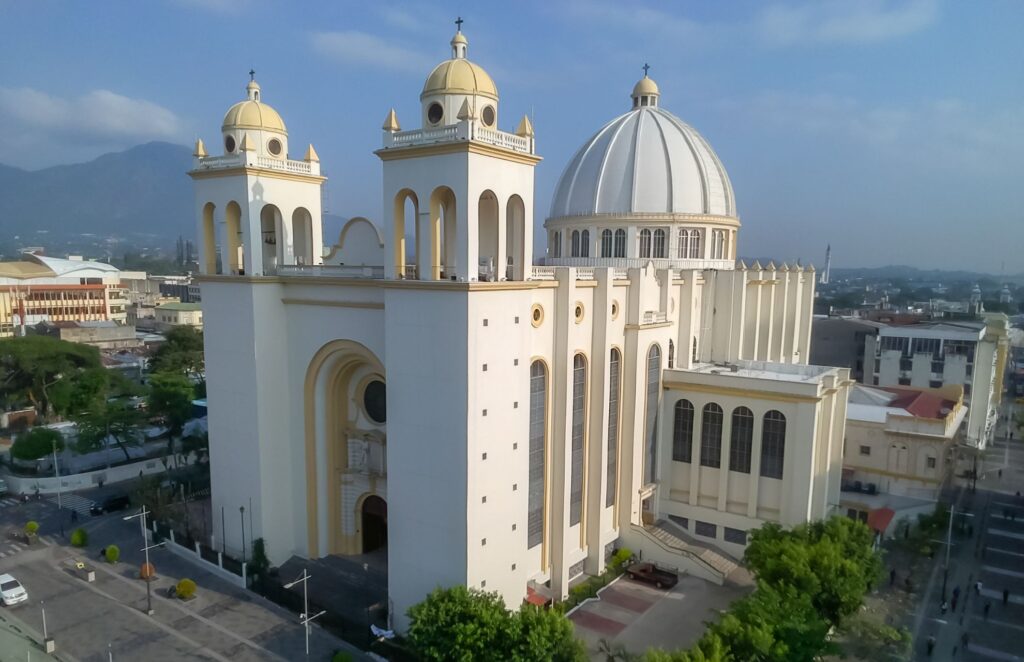
What to do at Catedral Metropolitana de San Salvador
- Pay tribute to Archbishop Óscar Romero: Visit the crypt of Archbishop Romero, where many come to honor his legacy and learn about his role in the history of El Salvador.
- Admire the architecture: Marvel at the cathedral’s mix of traditional and modern elements, including its intricate mosaics and stunning stained-glass windows, which fill the interior with interesting light.
- Learn the history: Explore the cathedral’s connection to El Salvador’s tumultuous past, including its role as a refuge during political unrest.
- Attend a service: Experience the strong faith of the local community by attending a mass, which offers a glimpse into the spiritual life of El Salvador and its people.
13. Ruta de Las Flores (Juayúa and Ataco)
The Ruta de Las Flores, or “Route of Flowers,” is one of El Salvador’s most scenic regions. This route connects several little towns and is named for the remarkable wildflowers that bloom along it during the cooler months. There is no real main tourist attraction in Ruta de Las Flores, as each town along the route has its own unique charm, with colorful street art, bustling markets, and some of the country’s best coffee plantations.
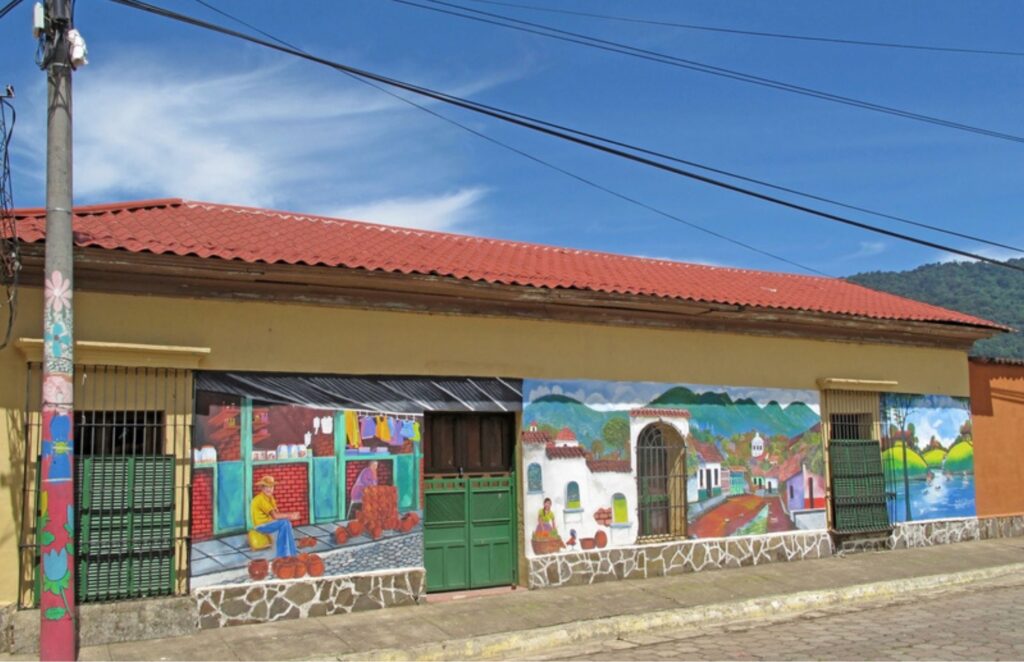
What to do at Ruta de Las Flores
- Explore street art: Towns like Ataco and Apaneca are famous for their vibrant street art, with murals that tell stories of local culture, history, and traditions.
- Visit a food festival: Don’t miss the Juayúa Food Festival, one of the most famous tourist attractions in El Salvador, where you can sample various dishes, from savory to sweet, and enjoy live music and a lively atmosphere.
- Tour coffee plantations: One of the best things to do in El Salvador for coffee lovers is to go to Ruta de Las Flores. El Salvador’s coffee culture and tours of coffee plantations in the highlands await those who want to learn and taste the best coffee in the region.
- Hike to Chorros de la Calera: This hidden waterfall on Ruta de Las Flores is located near Juayúa. It is surrounded by greenery and offers a refreshing dip for those seeking adventure.
14. El Tunco Beach
El Tunco gets its name (“The Pig”) from a rock formation that resembles a pig when viewed from the ocean. It’s now a wonderful place for surfing, live music, and fantastic parties on the Pacific Ocean coast.
By day, surfers take to the waves at El Sunzal, while visitors explore the black-sand beaches and nearby waterfalls. By night, El Tunco parties become one of the best places to go to in El Salvador for those who love the nightlife.
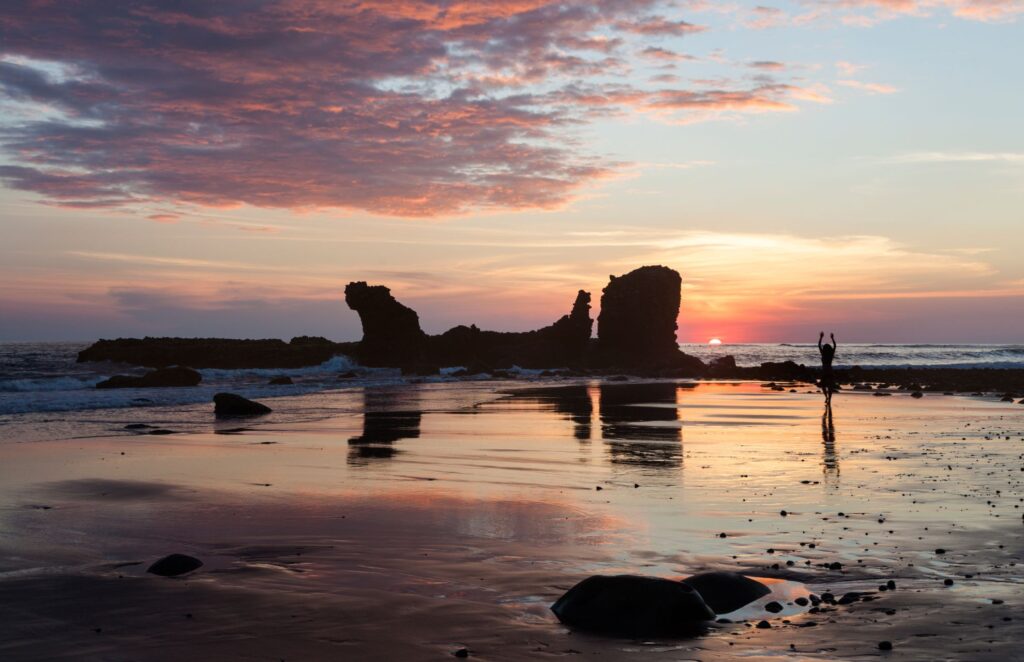
What to do at El Tunco Beach
- Surf the waves: El Tunco Beach and nearby El Sunzal are among the best surfing spots in Central America, with consistent breaks for surfers of all levels.
- Relax on the beach: Spend time soaking up the sun on the black-sand beach or take a leisurely walk to enjoy the beautiful coastline.
- Enjoy the nightlife: As the sun sets, El Tunco transforms into a party hub, so don’t miss that.
15. Joya de Cerén
Known as the “Pompeii of the Americas,” Joya de Cerén was buried by volcanic ash around 600 AD. It preserved an ancient Mayan village, including utensils and storage pits, in stunning detail.
Unlike other Mayan ruins that showcase grand temples and palaces, Joya de Cerén offers a glimpse into the daily lives of ordinary people, with remarkably preserved homes, tools, and communal spaces. For history buffs and culture enthusiasts, Joya de Cerén is absolutely worth visiting.
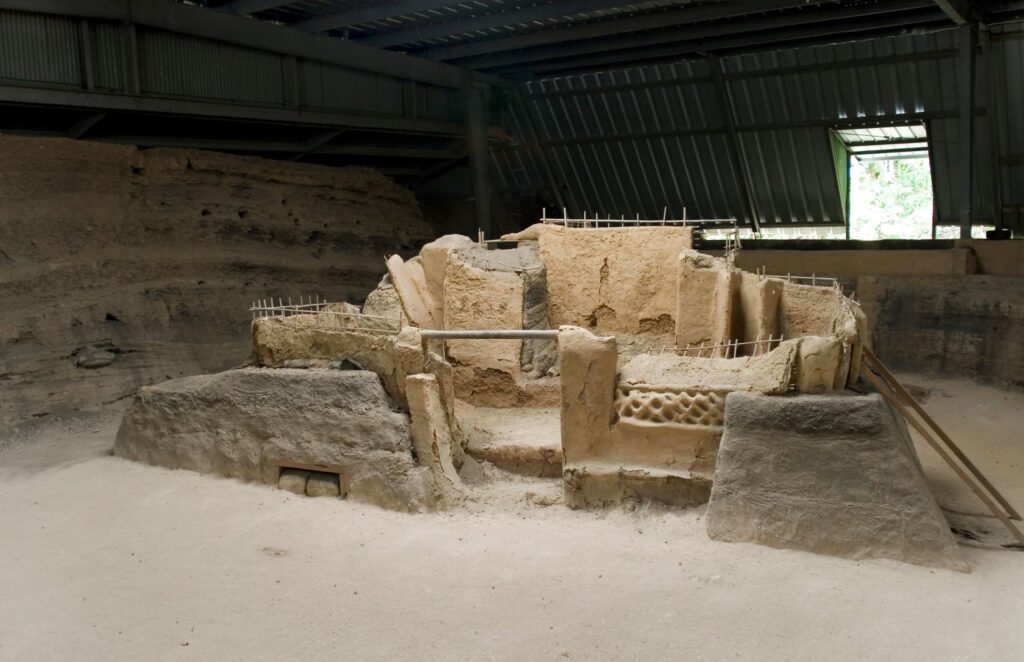
What to do at Joya de Cerén
- Explore the Mayan ruins: Walk through the excavated structures, including homes, storage facilities, and kitchens, all preserved in incredible detail by volcanic ash.
- Learn the history: Visit the on-site museum to see artifacts such as pottery, tools, and even food remnants that bring the ancient community’s lifestyle to life.
- Appreciate the UNESCO recognition: Discover why this site is considered a cultural treasure and a key piece of Mayan history.
16. Costa del Sol
Stretching along the Pacific coast, Costa del Sol is one of El Salvador’s most beautiful beaches and a favorite destination for locals and tourists alike. Known for its golden sands, calm waters, and family-friendly atmosphere. The beach offers a mix of relaxation and activities, from water sports to exploring nearby islands on a boat trip.
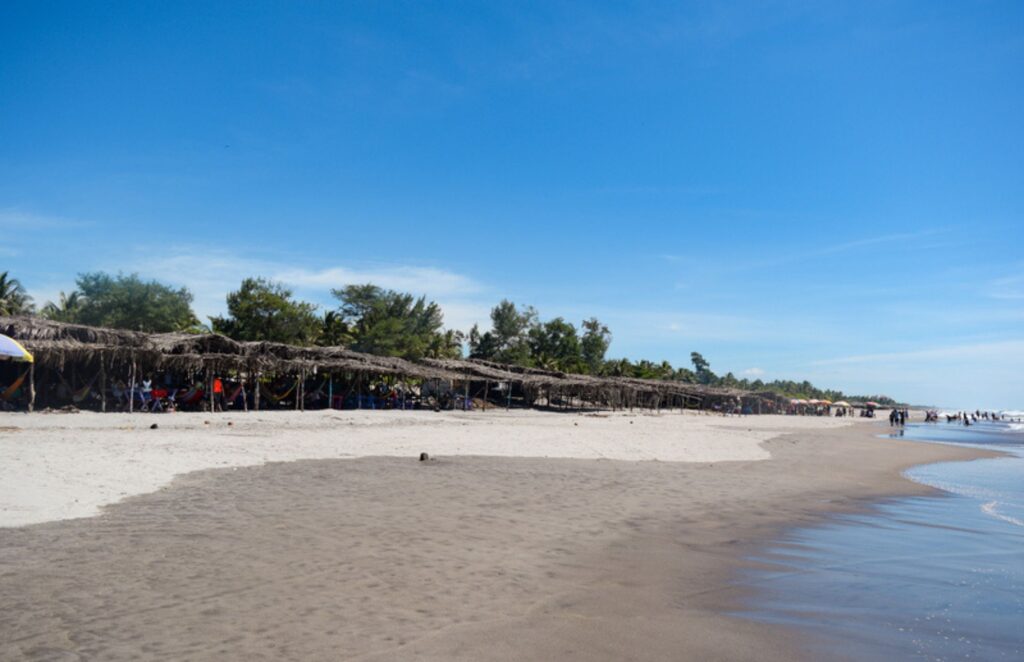
What to do at Costa del Sol
- Relax on the beach: Spend your day lounging on the soft sands, soaking in the sun, and enjoying the gentle waves of this beautiful beach.
- Take a boat trip: Explore the nearby islands and mangroves, where you can discover hidden beaches, spot wildlife, and take in the beauty of the Pacific coast from the water.
- Try water sports: This beach is perfect for activities like jet skiing, kayaking, or paddleboarding, making it an excellent choice for visitors seeking adventure.
- Savor local seafood: Enjoy freshly caught seafood at the beachside restaurants, where you can feast on traditional Salvadoran dishes with an ocean view.
- Enjoy a family-friendly vibe: With its calm waters and welcoming atmosphere, Costa del Sol is perfect for families with children to enjoy a safe and fun beach day.
Tips for enjoying tourist attractions in El Salvador
Exploring the best places to go in El Salvador from east to west is an incredible way to experience the country’s rich culture, stunning landscapes, and exciting activities. To help you make the most of your adventure, here’s a guide to what to do in El Salvador and how to enjoy it to the fullest:
- Start early for popular attractions: Beat the crowds and enjoy the cooler weather by visiting hotspots like the Santa Ana Volcano and Tamanique Waterfalls in the morning.
- Hire local guides: Whether you’re exploring Joya de Cerén or hiking to Puerta del Diablo, a local guide can provide fascinating insights and share hidden fun things to do in El Salvador..
- Pack for adventure: Bring the right gear for El Salvador’s varied activities. All that hiking in different terrains, cool climates on mountain trails, and hot beach weather require a packing list that’s thoroughly planned out.
- Plan your transport wisely: Renting a car offers the flexibility to reach remote gems like Laguna de Alegría and Jiquilisco Bay, while public transport like chicken buses is great for a more local experience.
- Stay connected with an eSIM: Reliable internet makes navigating places to go in El Salvador and book activities easier. You can try getting an eSIM for El Salvador, but an eSIM is much easier to buy and deal with. If you’ll be staying near the borders, it’s a good idea to opt for the eSIM for Central America or the regional eSIM for South America to make sure the interference between networks doesn’t stand in your way to connectivity.
An eSIM, or embedded SIM, is a digital SIM card built into your device, allowing you to activate a mobile plan without swapping a physical card. It’s much easier to buy and install than a traditional SIM card and keeps you connected just as well. Reliable internet makes navigating places, saving your plans, and booking things to do in El Salvador easy.
Now that you have your east-to-west travel plan, save it on your phone and access it anytime using your Holafly eSIM for El Salvador. El Salvador is not your only stop on this trip? You can get an eSIM for South America that covers all countries of this region.





 Language
Language 


















 No results found
No results found






